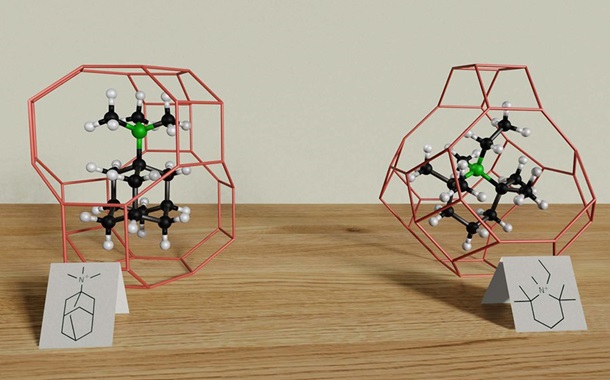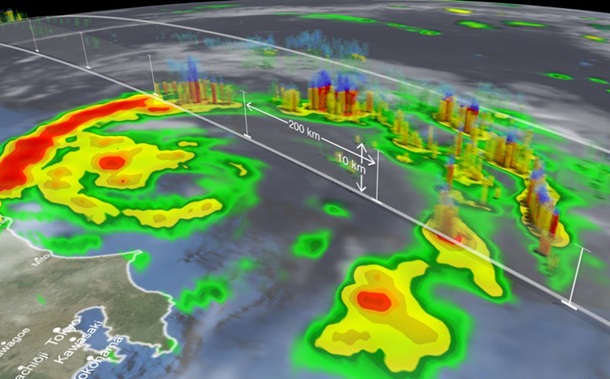A Method for Assessing Urban Industrial Ecological Efficiency Using SBM-GML Model with Tax Reduction
Downloads
Doi:10.28991/HIJ-2024-05-04-02
Full Text:PDF
Downloads
Köppl, A., & Schratzenstaller, M. (2023). Carbon taxation: A review of the empirical literature. Journal of Economic Surveys, 37(4), 1353–1388. doi:10.1111/joes.12531.
Guo, B., Wang, Y., Zhou, H., & Hu, F. (2023). Can environmental tax reform promote carbon abatement of resource-based cities? Evidence from a quasi-natural experiment in China. Environmental Science and Pollution Research, 30(55), 117037–117049. doi:10.1007/s11356-022-23669-3.
YAN, X., & TU, J. (2021). The spatio-temporal evolution and driving factors of eco-efficiency of resource-based cities in the Yellow River Basin. Journal of Natural Resources, 36(1), 223. doi:10.31497/zrzyxb.20210115.
Usman, A., Quan-Lin, L., Abdullah, A. M., Shakib, M., & Wasim, I. (2021). Correction to: Nexus between agro-ecological efficiency and carbon emission transfer: evidence from China. Environmental Science and Pollution Research, 28(32), 44581-44581. doi:10.1007/s11356-021-14461-w.
George, L., & Sumathy, P. (2023). An integrated clustering and BERT framework for improved topic modeling. International Journal of Information Technology (Singapore), 15(4), 2187–2195. doi:10.1007/s41870-023-01268-w.
Vaičiukynas, E., Andrijauskienč—, M., Danč—nas, P., & Benetytč—, R. (2023). Socio-eco-efficiency of high-tech companies: a cross-sector and cross-regional study. Environment, Development and Sustainability, 25(11), 12761–12790. doi:10.1007/s10668-022-02589-9.
Xu, W., Xu, Z., & Liu, C. (2021). Coupling analysis of land intensive use efficiency and ecological well-being performance of cities in the Yellow River Basin. Journal of Natural Resources, 36(1), 114. doi:10.31497/zrzyxb.20210108.
Ke, H., Dai, S., & Yu, H. (2022). Effect of green innovation efficiency on ecological footprint in 283 Chinese Cities from 2008 to 2018. Environment, Development and Sustainability, 24(2), 2841–2860. doi:10.1007/s10668-021-01556-0.
Gill, A. R., Riaz, R., & Ali, M. (2023). The asymmetric impact of financial development on ecological footprint in Pakistan. Environmental Science and Pollution Research, 30(11), 30755–30765. doi:10.1007/s11356-022-24384-9.
Zhang, M., Zhang, P., & Li, H. (2021). Characteristics and evaluation methods of economic transformation performance of resource-based cities: An empirical study of Northeast China. Journal of Natural Resources, 36(8), 2051. doi:10.31497/zrzyxb.20210811.
Yin, B., & Yuan, C. H. (2022). Detecting latent topics and trends in blended learning using LDA topic modeling. Education and Information Technologies, 27(9), 12689–12712. doi:10.1007/s10639-022-11118-0.
Shao, D., Li, C., Huang, C., Xiang, Y., & Yu, Z. (2022). A news classification applied with new text representation based on the improved LDA. Multimedia Tools and Applications, 81(15), 21521–21545. doi:10.1007/s11042-022-12713-6.
Nanda, G., A. Douglas, K., R. Waller, D., E. Merzdorf, H., & Goldwasser, D. (2021). Analyzing Large Collections of Open-Ended Feedback from MOOC Learners Using LDA Topic Modeling and Qualitative Analysis. IEEE Transactions on Learning Technologies, 14(2), 146–160. doi:10.1109/TLT.2021.3064798.
Weisser, C., Gerloff, C., Thielmann, A., Python, A., Reuter, A., Kneib, T., & Säfken, B. (2023). Pseudo-document simulation for comparing LDA, GSDMM and GPM topic models on short and sparse text using Twitter data. Computational Statistics, 38(2), 647–674. doi:10.1007/s00180-022-01246-z.
Xie, R., Chu, S. K. W., Chiu, D. K. W., & Wang, Y. (2021). Exploring Public Response to COVID-19 on Weibo with LDA Topic Modeling and Sentiment Analysis. Data and Information Management, 5(1), 86–99. doi:10.2478/dim-2020-0023.
Mehta, V., Bawa, S., & Singh, J. (2021). WEClustering: word embeddings based text-clustering technique for large datasets. Complex and Intelligent Systems, 7(6), 3211–3224. doi:10.1007/s40747-021-00512-9.
Belwal, R. C., Rai, S., & Gupta, A. (2023). Extractive text summarization using clustering-based topic modeling. Soft Computing, 27(7), 3965–3982. doi:10.1007/s00500-022-07534-6.
Saravanan, S., Karthigaivel, R., & Magudeeswaran, V. (2021). A brain tumor image segmentation technique in image processing using ICA-LDA algorithm with ARHE model. Journal of Ambient Intelligence and Humanized Computing, 12(5), 4727–4735. doi:10.1007/s12652-020-01875-6.
Sharma, S. K., Vijayakumar, K., Kadam, V. J., & Williamson, S. (2022). Breast cancer prediction from microRNA profiling using random subspace ensemble of LDA classifiers via Bayesian optimization. Multimedia Tools and Applications, 81(29), 41785–41805. doi:10.1007/s11042-021-11653-x.
Thielmann, A., Weisser, C., Krenz, A., & Säfken, B. (2023). Unsupervised document classification integrating web scraping, one-class SVM and LDA topic modelling. Journal of Applied Statistics, 50(3), 574–591. doi:10.1080/02664763.2021.1919063.
van Ewijk, S., & Hoekman, P. (2021). Emission reduction potentials for academic conference travel. Journal of Industrial Ecology, 25(3), 778–788. doi:10.1111/jiec.13079.
Dong, F., & Zheng, L. (2022). The impact of market-incentive environmental regulation on the development of the new energy vehicle industry: a quasi-natural experiment based on China's dual-credit policy. Environmental Science and Pollution Research, 29(4), 5863–5880. doi:10.1007/s11356-021-16036-1.
Tan, L., Wu, X., Guo, J., & Santibanez-Gonzalez, E. D. R. (2022). Assessing the Impacts of COVID-19 on the Industrial Sectors and Economy of China. Risk Analysis, 42(1), 21–39. doi:10.1111/risa.13805.
Liu, J., Gong, E., & Wang, X. (2022). Economic benefits of construction waste recycling enterprises under tax incentive policies. Environmental Science and Pollution Research, 29(9), 12574–12588. doi:10.1007/s11356-021-13831-8.
Qian, H., Xu, S., Cao, J., Ren, F., Wei, W., Meng, J., & Wu, L. (2021). Air pollution reduction and climate co-benefits in China's industries. Nature Sustainability, 4(5), 417–425. doi:10.1038/s41893-020-00669-0.
Phrommarat, B., & Oonkasem, P. (2021). Sustainable pineapple farm planning based on eco-efficiency and income risk: A comparison of conventional and integrated farming systems. Applied Ecology and Environmental Research, 19(4), 2701–2717. doi:10.15666/aeer/1904_27012717.
Guo, L., Cao, Y., Su, Q., Liu, T., & Tseng, M. L. (2023). Identifying the evolution of ecological poverty alleviation efficiency and its influencing factors: evidence from counties in Northeast China. Environmental Science and Pollution Research, 30(23), 64078–64093. doi:10.1007/s11356-023-26783-y.
Li, J., Chen, L., Chen, Y., & He, J. (2022). Digital economy, technological innovation, and green economic efficiency”Empirical evidence from 277 cities in China. Managerial and Decision Economics, 43(3), 616–629. doi:10.1002/mde.3406.
Zhao, H., Liu, G., You, S., Camargo, F. V. A., Zavelani-Rossi, M., Wang, X., Sun, C., Liu, B., Zhang, Y., Han, G., Vomiero, A., & Gong, X. (2021). Gram-scale synthesis of carbon quantum dots with a large Stokes shift for the fabrication of eco-friendly and high-efficiency luminescent solar concentrators. Energy and Environmental Science, 14(1), 396–406. doi:10.1039/d0ee02235g.
Oh, C. (2023). Exploring the Way to Harmonize Sustainable Development Assessment Methods in Article 6.2 Cooperative Approaches of the Paris Agreement. Green and Low-Carbon Economy, 1(3), 121–129. doi:10.47852/bonviewglce32021065.
Wang, Y., Liu, Y., Feng, W., & Zeng, S. (2023). Waste Haven Transfer and Poverty-Environment Trap: Evidence from EU. Green and Low-Carbon Economy, 1(1), 41–49. doi:10.47852/bonviewglce3202668.
Lee, C. C., & Du, L. (2024). Can green finance improve eco-efficiency? New Insights from China. Environmental Science and Pollution Research, 31(28), 40976–40994. doi:10.1007/s11356-024-33832-7.
- This work (including HTML and PDF Files) is licensed under a Creative Commons Attribution 4.0 International License.





















